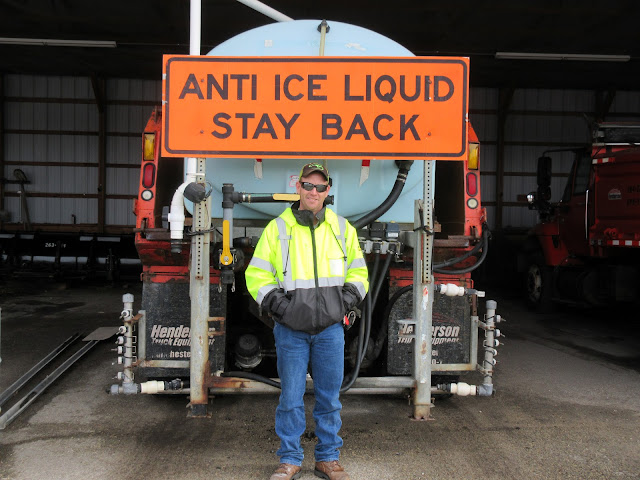By Lisa Knoll, Public Affairs Manager for southwest Kansas
 |
| Child passenger safety technician students use their training to properly install car seats. |
According to Safe Kids Worldwide, more than 2,600 children
under the age of 13 are involved in a car crash daily. That’s one child every 33 seconds. While most families put kids in car seats,
the latest research from the National Highway Traffic Safety Administration
(NHTSA) shows 59 percent of car seats are not installed correctly. As the District Six Public Affairs Manager
for KDOT, I am all too familiar with the statistics. In addition, I live in a county with a child
safety belt usage rate of 81 percent, which is well below the state’s average
of 90 percent.
Remembering the confusion and frustration I felt installing
and adjusting my daughter’s car seat, I enrolled in a three-day CPS technician
certification class to make a difference in the lives of children and families
in southwest Kansas.
My class included professionals from health care, EMS,
police departments, KDOT and private individuals. Our instructors were career law enforcement
officers with more than 30 years of experience installing car seats and certifying
technicians. We all had one thing in
common — a desire to make our communities safer for the children and families
we serve.
The first two-and-a-half days were intense — we discussed
injury prevention, crash dynamics and seat belt systems. We also learned about
car seats and studied car seat and vehicle manuals. Our class completed several practice
scenarios given a child’s age, height, weight and special needs. We picked out the correct car seat and installed
it in a vehicle multiple times. The class was also given five different car
seat installations, we identified what was incorrect about each
installation.
 |
| Child passenger safety technician students use their training to properly install car seats. |
By lunch on the third day, we were ready for the final test.
We hosted a car seat check lane at the Kansas Highway Patrol parking lot in
Garden City. Our instructors warned us
that car seat installation was a bit of puzzle, and you never knew what to
expect. They were right. Three cars, three seats and three children
were part of the challenge, and each of them had unique scenarios.
The first installation was basic and straight forward. A mother-to-be arrived with an infant seat
still in the box. She was going to be
induced that night, so the check lane came at the perfect time for her. Two of my classmates showed her how to
correctly install the seat and check the installation for future reference.
The second car’s occupants were an older gentleman and a preschool-age
child who was in a forward-facing booster seat.
Three of our classmates greeted them and noticed right away that the
seat was not correctly installed. My
classmates attached and tightened the top rear tether of the car seat, which
reduces the risk of head injury in a crash.
They explained this to the caregiver so that he could correctly install
the seat in the future.
Inside the third car was a mom and an infant. The rear-facing seat was already installed in
the mother’s car, she just wanted us to check it. My classmates noticed the level on the seat’s
reading was off, which meant the seat was not positioned correctly. They removed the seat and tried to install it
again, but the seat belt didn’t lock in place like it was supposed to.
 |
| Child passenger technician student reads a car's manual to better understand how to properly install a car seat for that vehicle. |
On closer inspection, they found that both seat belts in the
back seat were faulty and would not lock the seat in place, which could put the
infant in danger if there was a crash.
The only option was to install the seat using the vehicle’s LATCH system
in the center back seat. With the seat
installed in the correct position according to the seat’s level, they realized
the seat was in an almost upright position which was not safe for the
infant. When it was determined the level
must not be working, the instructors were called over. After it was decided
that the level was indeed faulty, another seat was provided and my classmates
helped the mother correctly install.
It was a dizzying three days filled with information,
demonstrations and practice. In the end,
thanks to our instructors, we have 10 newly certified Child Passenger Safety
Technicians in southwest Kansas ready to assist parents.
If you are interested in learning more about child passenger
safety or becoming a certified technician, visit https://www.ktsro.org/child-passenger-safety.




























